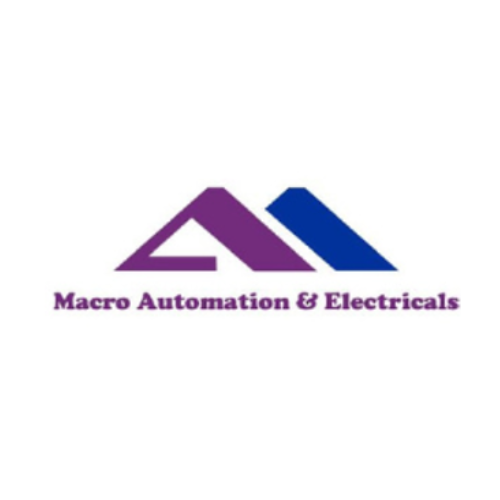- +91 9886004169
- info@unisolcommunications.com


Fiber optic communication has become the backbone of modern data transmission, enabling high-speed, high-capacity networks for telecommunications, data centers, corporate networks, and even industrial environments. In such a fast-paced and data-intensive world, maintaining these networks is crucial for optimal performance and minimal downtime. This is where services like fiber splicing, OTDR testing, and fiber and structured cabling come into play, ensuring the reliability and efficiency of the entire network infrastructure.
Fiber splicing is a critical process in the installation, maintenance, and repair of fiber optic networks. It involves joining two optical fibers together to create a continuous optical path, ensuring that the signal can travel through the network without any interruptions. This process is vital when extending the network, fixing broken cables, or integrating new segments into an existing network.
There are two primary methods of fiber splicing: fusion splicing and mechanical splicing. Fusion splicing is the most commonly used technique because it offers minimal signal loss and provides high durability. It involves using an electric arc to melt the ends of two fiber cables and fuse them together. The fusion process permanently bonds the fibers, resulting in a seamless connection. As a result, this method minimizes attenuation (signal loss) and ensures a stronger and more reliable connection.
On the other hand, mechanical splicing involves aligning the fiber ends using a special mechanical device that holds the fibers in place and creates an optical connection. Although mechanical splicing is simpler to perform, it does not offer the same level of performance as fusion splicing. While it may be used in situations where fusion splicing is not feasible or required, it is generally less efficient and can result in higher signal loss.
Fiber splicing is a delicate process, and it requires highly skilled technicians with the right tools and expertise to ensure that the splice is done correctly. A poorly executed splice can result in signal degradation, increased attenuation, or even a complete network failure. As fiber optic cables are fragile and prone to damage, it’s essential that splicing is carried out with precision. Skilled technicians use specialized splicing machines, cleaving tools, and splicing trays to make precise cuts and ensure that the fibers are aligned perfectly.
Once fiber optic cables are installed and spliced, OTDR (Optical Time Domain Reflectometer) testing becomes a crucial tool for diagnosing the health and performance of the network. OTDR testing is a non-destructive technique used to detect faults, measure the length of fiber links, and locate imperfections, breaks, or issues along the fiber path. This testing method is essential for troubleshooting and maintaining fiber optic systems.
An OTDR works by sending pulses of light into the fiber and measuring the time it takes for the light to be reflected back. By analyzing the reflected light, the OTDR can create a trace or graphical representation of the fiber’s performance. The trace indicates the location of any faults, such as breaks, bends, splices, or areas where signal loss occurs. This information helps technicians identify exactly where repairs are needed.
OTDR testing is indispensable for the installation and maintenance of fiber optic systems. During the installation phase, OTDR testing verifies the quality of the fiber optic cables and ensures that they are free from defects that could affect data transmission. It also provides an accurate measure of the length of the fiber and the quality of splicing, allowing technicians to make necessary adjustments before the system is fully operational.
In addition, OTDR testing plays a critical role in ongoing network maintenance. Over time, fiber optic cables can degrade due to wear, environmental factors, or improper handling. OTDR testing helps identify these issues early, preventing more serious disruptions to network performance. Technicians can perform periodic OTDR tests to monitor the health of the network, detect early signs of wear, and make timely repairs.
One of the main advantages of OTDR testing is its ability to pinpoint specific locations of faults. By identifying the exact location of a problem, OTDR testing enables faster and more efficient repairs. This helps minimize downtime, reduce maintenance costs, and ensure that the network remains reliable.
Fiber and structured cabling is the foundation of any fiber optic network, providing the infrastructure necessary for seamless data transfer. Fiber optic cabling is the most efficient and fastest medium for data transmission, offering much higher bandwidth and lower signal loss compared to traditional copper cabling. As more organizations and industries shift toward high-speed networks, fiber optic cabling is becoming the standard for both new installations and network upgrades.
The process of installing fiber optic cabling requires careful planning, precise execution, and compliance with industry standards. Fiber optic cables must be carefully routed, protected from external damage, and connected to network switches, routers, or other devices to ensure smooth communication. As fiber optic networks continue to grow, structured cabling solutions are essential to ensure that all components of the network are organized and easily managed.
Structured cabling involves the design and installation of a comprehensive system that connects all the various components of a building or facility to the fiber optic network. This includes managing cables, patch panels, and switches to ensure proper signal flow and efficient data transmission. Structured cabling is highly scalable, which means it can accommodate future upgrades and expansions without requiring a complete system overhaul.
Fiber optic systems are known for their reliability and high performance, but like any other technology, they require regular maintenance to ensure that they continue to operate efficiently. Fiber splicing and OTDR testing are two essential services that play a key role in maintaining the integrity and performance of fiber optic networks.
When installing new fiber optic lines, fiber splicing ensures that the connections between cables are seamless and strong, reducing the risk of signal loss and improving network reliability. OTDR testing, on the other hand, helps identify any issues within the network, whether they are caused by poor installation, aging cables, or external factors like physical damage. These services, when performed regularly, help prevent potential disruptions and ensure that the network continues to operate at peak performance.
At Unisol, we offer expert fiber splicing, OTDR testing, and fiber and structured cabling services to ensure that your fiber optic network is up to industry standards. Whether it’s for a new build, network upgrade, or routine maintenance, our team of skilled technicians is equipped with the latest tools and technologies to perform splicing and testing efficiently and accurately. We take pride in delivering reliable, high-quality services that ensure the longevity and performance of your fiber optic infrastructure.
Unisol is a trusted provider of fiber optic services, offering end-to-end solutions for fiber splicing, OTDR testing, and structured cabling. Our technicians are highly trained and experienced in handling the delicate nature of fiber optic cables and using the most advanced equipment to ensure that all connections are made to the highest standards.
We understand the importance of maintaining a reliable network, and we work closely with our clients to ensure that their fiber optic infrastructure is always performing at its best. Our services are designed to minimize downtime, reduce costs, and ensure that your network is always operational, no matter the circumstances.
Whether you are building a new fiber optic network, upgrading an existing one, or simply performing routine maintenance, Unisol is here to provide you with the expertise and support you need to ensure optimal performance and reliability.
By choosing Unisol for your fiber optic services, you can be confident that your network is in expert hands. We offer tailored solutions that meet the unique needs of each client, ensuring that your fiber optic infrastructure is built to last and performs at the highest level for years to come.
+91 98860 04169
+91 98440 65605
info@unisolcommunications.com































Unisol believes in transparency. Take a look at our ongoing projects that are currently making a difference
Manufacturing Initiatives


Copyright © 2025 | Unisol Communications Pvt Ltd. | All rights reserved.